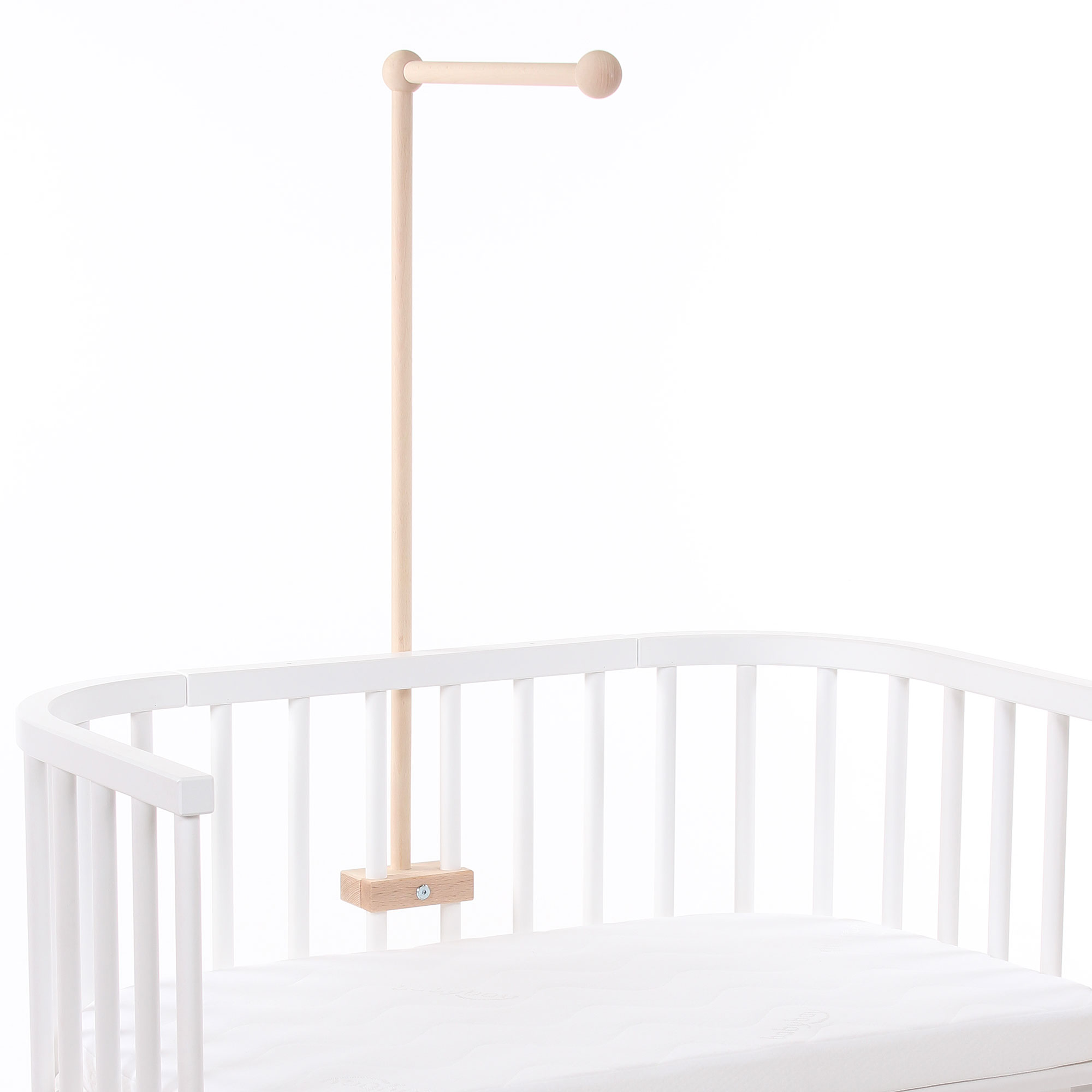When you first set out on your co-sleeping journey, one thing will become obvious very quickly: every family has a different idea of what co-sleeping is and how to have their best nights of sleep by incorporating the practice into their own routine. While some families may choose a way of co-sleeping in bed that involves inviting their children to share their own mattress, others choose the safer and more secure option of encouraging their babies to sleep while snuggled in a made-just-for-them bedside co-sleeper.
Given the fact that co-sleeping has been the preferred family sleep practice throughout history, it’s not surprising that there’s so much diversity when it comes to how families choose to practice it.
But what does that diversity look like? And how do parents like you learn how to put a co-sleeping baby to bed so that they can get a sound night’s sleep while also being perfectly safe?
We’re about to break down everything you need to know about the differences between bed sharing and putting baby to sleep with a co-sleeper, so that you can enjoy the many benefits of co-sleeping while being 100% confident that your little one is feeling rested, relaxed and snuggled in comfort all night long.
Co-Sleeping and Bed Sharing: How Are They Different?
Though many people think that co-sleeping and bed sharing are the same thing, these two terms actually describe two very different sleep practices.
When you see a baby sleeping in bed with parents (as in: sharing a mattress as well as a sleep space), you’re seeing bed sharing in action.
In bed sharing, babies often stay cuddled up to parents while being surrounded by the same pillows and blankets that adults use to keep themselves comfy and ready for rest. Though this might seem positive at first (it’s always good to keep baby comfy as can be, right??), the American Academy of Pediatrics (or AAP) makes it clear that firmer is better when it comes to your baby’s sleep environment.
That’s because comfy blankets and pillows can quickly become dangerous for babies, especially those little ones who are not yet old enough to know how to safely roll themselves out of harm’s way.
Bedside co-sleepers offer an alternative to traditional bed sharing by keeping your baby within arm’s reach while still giving them a perfectly safe sleep space that’s all their own.
With bedside co-sleepers, your baby is able to sleep the night away with a firm mattress that’s perfectly suited to their needs. While still keeping you within easy reach of your little one so that nighttime comforting and quick nighttime nursing is easy-as-can-be.
Why Are Bedside Co-Sleepers the Recommended Way to Co-Sleep?
While both bedside co-sleepers and bed sharing put you within arm’s reach of your little one through the night, bed sharing is often associated with risks that don’t come when you create a safer co sleeping setup with a bedside co-sleeper.
In fact, when the American Academy of Pediatrics first released their infant sleep recommendations, they drew a clear distinction between the definition of “bed sharing” and “co-sleeping.”
They explained that “co-sleeping” might be a term that “is commonly used, but the task force finds it confusing, and it is not used in this document. When used, authors need to make clear whether they are referring to sleeping in close proximity (which does not necessarily entail bed-sharing) or bed-sharing.”
If you cut through all that formality, you’ll see a clear difference between bed sharing and co-sleeping as sleep practices: while parent and baby rest on the same sleep surface while bed sharing, co-sleeping can refer to any situation where you put your baby to sleep close by.
And, more importantly, can refer to sleep set-ups where your baby is given a comfortable space that has been carefully crafted with love to care for their comfort and safety. One that isn’t all about adult comfort (though it still provides that too!), but puts your baby at the center of attention.
Why Do Parents Choose to Bed Share When They Have Baby Sleeping in Bed?
There are many benefits that parents who sleep close to their baby enjoy. Though waking up without bleary eyes in the morning is a big-time plus (as any new parent who has struggled to get quality sleep would agree!), better rest isn’t the only thing that calls parents to want to c0-sleep child after child, and time after time.
Babies naturally wake up every few hours during the first months of life. By sleeping close to your little one, you make baby care easier while also giving your baby the subconscious hint that they’re safe and free to sleep in peace.
When babies sleep better, so do parents! Which turns co-sleeping into a win-win for both parents and babies who are looking to get more nurturing hours of rest every night.
Many families also enjoy the extra shuteye that comes from being able to quickly calm and feed your baby while handling all other baby care with ease.
Because though reaching over crib bars a few times a night might not sound like a big deal to non-parents or first-time expecting moms, it can become a detriment to healing for mothers who are recovering from birth or trying to crack the code to get sleep after c-section.
Which gives co-sleeping parents who are in easy reach of their child a big help when it comes to keeping themselves comfortable and rested all night long.
So How Do You Make Co-Sleeping In Bed Safe?
When you start asking how do you make co-sleeping in bed safe? there’s one go-to simple answer: you choose the right tool to be by your bedside. A co-sleeping bed attachment (like a bedside co-sleeper) fits snugly against your bed and lets you sleep closely to your little one through the night, while giving them a safe sleep space that offers the firm bedding they need.
Parents who choose a co-sleeping bed attachment over other sleep practices — including bed sharing — take all the guesswork out of how to safely co-sleep in bed. Which gives them less stress and more energy to make beautiful memories throughout the day and night.
With a bedside attachment like a bedside co-sleeper, your baby gets to lie by your side all night long. And better yet: they get to do in a sleep surface free from the too-plush blankets, pillows, and other bedding that you rely on to keep you comfy and cozy (ones that are an A+ for adult comfort but a solid F when it comes to baby safety).
Do Experts Recommend Promoting Safe Sleep with a Co-Sleeper?
Just like the American Academy of Pediatrics makes a distinction between co sleeping in bed through bed sharing and co-sleeping with a safe tool like a bedside co-sleeper, so do other experts.
In a survey of different infant sleeping practices, researchers made a distinction between co-sleeping and bed sharing, noting the key risks that come from babies being surrounded by plush bedding and covers while bed sharing.
These risks are ones that can be avoided by using a safe bedside co-sleeper. One that prioritizes your baby’s comfort while also giving them a firm and non-plush surface to rest their head and sleep peacefully.
Bedside co-sleepers offer many families an opportunity to balance lifestyle considerations and safety ones. With one set up safely bedside your bed, you’re able to enjoy all the nurturing, peaceful hours of catching Zs within arm’s reach of your little one…while also promoting safe sleep while co-sleeping in bed.
Which sounds like a win-win for many families, and could be the perfect one for yours.














